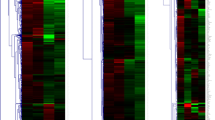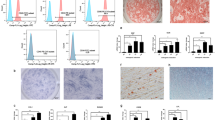Abstract
The purpose of this study is to evaluate the effects of dexamethasone on mesenchymal stem cells from human gingiva using next-generation sequencing. The verification and suggestion of possible mechanisms was performed. Human gingiva-derived stem cells were treated with a final concentration of 10-7M dexamethasone at 2 and 24 hours. Extraction of RNA, sequencing of mRNA, gene ontology and pathway analysis were performed. Quantification by real-time polymerase chain reaction was conducted for validation. A fold change of two was applied for this study, and a log2 normalized read count of 5 or greater was applied to minimize false counts. Expression of SMAD3 and ESR1 was decreased in dexamethasone at 24 hours. Increased expression of BMP6 and ACHE was noted in dexamethasone at 24 hours. TGF-β signaling was involved in the target genes chosen for osteoblast differentiation. It was clear that the application of dexamethasone produced reduced expression of SMAD3 and ESR1 and enhanced expression of ACHE and BMP6 of human gingiva-derived mesenchymal stem cells. An RNA sequencing strategy can provide new insights into the mechanism of dexamethasone in stem cells originating from dental areas.
Similar content being viewed by others
References
Li, T., Li, H., Fan, J., Zhao, R.C. & Weng, X. MicroRNA expression profile of dexamethasone-induced human bone marrow-derived mesenchymal stem cells during osteogenic differentiation. J. Cell. Biochem. 115, 1683–1691 (2014).
Ishida, Y. & Heersche, J.N. Glucocorticoid-induced osteoporosis: both in vivo and in vitro concentrations of glucocorticoids higher than physiological levels attenuate osteoblast differentiation. J. Bone Miner. Res. 13, 1822–1826 (1998).
Atmani, H., Chappard, D. & Basle, M.F. Proliferation and differentiation of osteoblasts and adipocytes in rat bone marrow stromal cell cultures: effects of dexamethasone and calcitriol. J. Cell. Biochem. 89, 364–372 (2003).
Coelho, M.J. & Fernandes, M.H. Human bone cell cultures in biocompatibility testing. Part II: effect of ascorbic acid, beta-glycerophosphate and dexamethasone on osteoblastic differentiation. Biomaterials 21, 1095–1102 (2000).
Park, J.B. Effects of the combination of dexamethasone and fibroblast growth factor2 on differentiation of osteoprecursor cells. Mol. Med. Rep. 9, 659–662 (2014).
Park, J.B. The effects of dexamethasone, ascorbic acid, and beta-glycerophosphate on osteoblastic differentiation by regulating estrogen receptor and osteopontin expression. J. Surg. Res. 173, 99–104 (2012).
Roelen, B.A. & Dijke, P. Controlling mesenchymal stem cell differentiation by TGFBeta family members. J. Orthop. Sci. 8, 740–748 (2003).
AC’t Hoen, P. et al. Reproducibility of high-throughput mRNA and small RNA sequencing across laboratories. Nat. Biotechnol. 31, 1015–1022 (2013).
Schuster, S.C. Next-generation sequencing transforms today’s biology. Nat. Methods 5, 16–18 (2008).
Misra, K. & Matise, M.P. A critical role for sFRP proteins in maintaining caudal neural tube closure in mice via inhibition of BMP signaling. Dev. Biol. 337, 74–83 (2010).
Jin, Y.R., Turcotte, T.J., Crocker, A.L., Han, X.H. & Yoon, J.K. The canonical Wnt signaling activator, Rspondin2, regulates craniofacial patterning and morphogenesis within the branchial arch through ectodermal-mesenchymal interaction. Dev. Biol. 352, 1–13 (2011).
Beloti, M.M. & Rosa, A.L. Osteoblast differentiation of human bone marrow cells under continuous and discontinuous treatment with dexamethasone. Braz. Dent. J. 16, 156–161 (2005).
Jin, S.H. et al. Isolation and characterization of human mesenchymal stem cells from gingival connective tissue. J. Periodontal. Res. 50, 461–467 (2015).
Kim, B.B., Ko, Y. & Park, J.B. Effects of risedronate on the morphology and viability of gingiva-derived mesenchymal stem cells. Biomed Rep. 3, 845–848 (2015).
Ha, D.H. et al. Potential differentiation ability of gingiva originated human mesenchymal stem cell in the presence of tacrolimus. Sci. Rep. 6, 34910 (2016).
Jeong, S.H., Lee, J.E., Jin, S.H., Ko, Y. & Park, J.B. Effects of Asiasari radix on the morphology and viability of mesenchymal stem cells derived from the gingiva. Mol. Med. Rep. 10, 3315–3319 (2014).
Fournier, B.P., Larjava, H. & Hakkinen, L. Gingiva as a source of stem cells with therapeutic potential. Stem Cells Dev. 22, 3157–3177 (2013).
Jeong, S.H., Kim, B.B., Lee, J.E., Ko, Y. & Park, J.B. Evaluation of the effects of Angelicae dahuricae radix on the morphology and viability of mesenchymal stem cells. Mol. Med. Rep. 12, 1556–1560 (2015).
Lee, S.I., Yeo, S.I., Kim, B.B., Ko, Y. & Park, J.B. Formation of size-controllable spheroids using gingiva-derived stem cells and concave microwells: Morphology and viability tests. Biomed Rep. 4, 97–101 (2016).
Ha, D.H., Yong, C.S., Kim, J.O., Jeong, J.H. & Park, J.B. Effects of tacrolimus on morphology, proliferation and differentiation of mesenchymal stem cells derived from gingiva tissue. Mol. Med. Rep. 14, 69–76 (2016).
Maher, C.A. et al. Transcriptome sequencing to detect gene fusions in cancer. Nature 458, 97–101 (2009).
Nahm, K.Y. et al. Gene profiling of bone around orthodontic mini-implants by RNA-sequencing analysis. Biomed Res. Int. 2015, 538080 (2015).
Jaager, K., Islam, S., Zajac, P., Linnarsson, S. & Neuman, T. RNA-seq analysis reveals different dynamics of differentiation of human dermis-and adipose-derived stromal stem cells. PLoS One 7, e38833 (2012).
Yang, Y. et al. Identification of differentially expressed genes in the development of osteosarcoma using RNAseq. Oncotarget 7, 87194–87205 (2016).
Zhou, S. TGF-β regulates β-catenin signaling and osteoblast differentiation in human mesenchymal stem cells. J. Cell. Biochem. 112, 1651–1660 (2011).
Chen, G., Deng, C. & Li, Y.-P. TGF-beta and BMP signaling in osteoblast differentiation and bone formation. Int. J. Biol. Sci. 8, 272–288 (2012).
Hjelmeland, A.B., Schilling, S.H., Guo, X., Quarles, D. & Wang, X.-F. Loss of Smad3-mediated negative regulation of Runx2 activity leads to an alteration in cell fate determination. Mol. Cell. Biol. 25, 9460–9468 (2005).
Kaji, H., Naito, J., Sowa, H., Sugimoto, T. & Chihara, K. Smad3 differently affects osteoblast differentiation depending upon its differentiation stage. Horm. Metab. Res. 38, 740–745 (2006).
Matsuda, T., Yamamoto, T., Muraguchi, A. & Saatcioglu, F. Cross-talk between transforming growth factor-β and estrogen receptor signaling through Smad3. J. Biol. Chem. 276, 42908–42914 (2001).
Friedman, M.S., Long, M.W. & Hankenson, K.D. Osteogenic differentiation of human mesenchymal stem cells is regulated by bone morphogenetic protein-6. J. Biol. Chem. 98, 538–554 (2006).
Kanehisa, M., Furumichi, M., Tanabe, M., Sato, Y. & Morishima, K. KEGG: new perspectives on genomes, pathways, diseases and drugs. Nucleic Acids Res. 45, D353–D361 (2017).
Author information
Authors and Affiliations
Corresponding author
Rights and permissions
About this article
Cite this article
Kim, BB., Kim, M., Park, YH. et al. Dexamethasone Leads to Upregulation of BMP6 and ACHE Suppression of SMAD3 and ESR1 Genes in Human Mesenchymal Stem Cells. BioChip J 12, 222–230 (2018). https://doi.org/10.1007/s13206-017-2306-5
Received:
Accepted:
Published:
Issue Date:
DOI: https://doi.org/10.1007/s13206-017-2306-5




